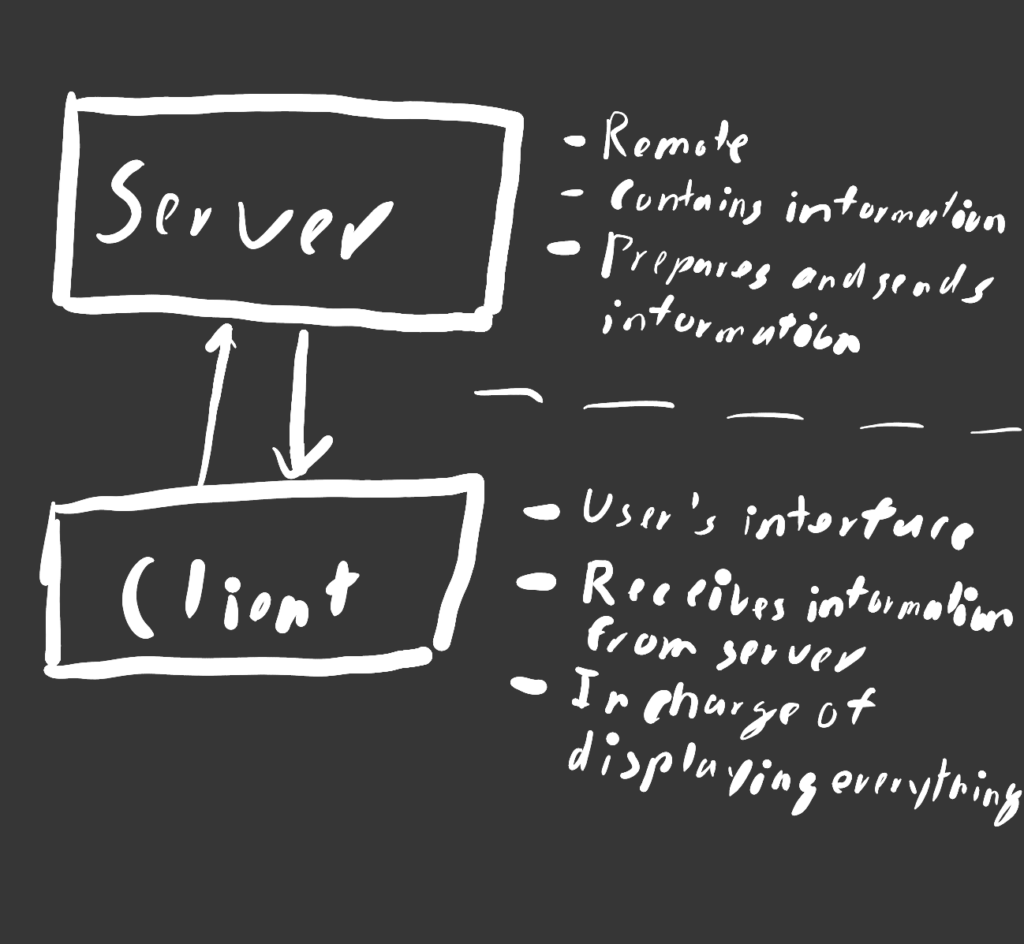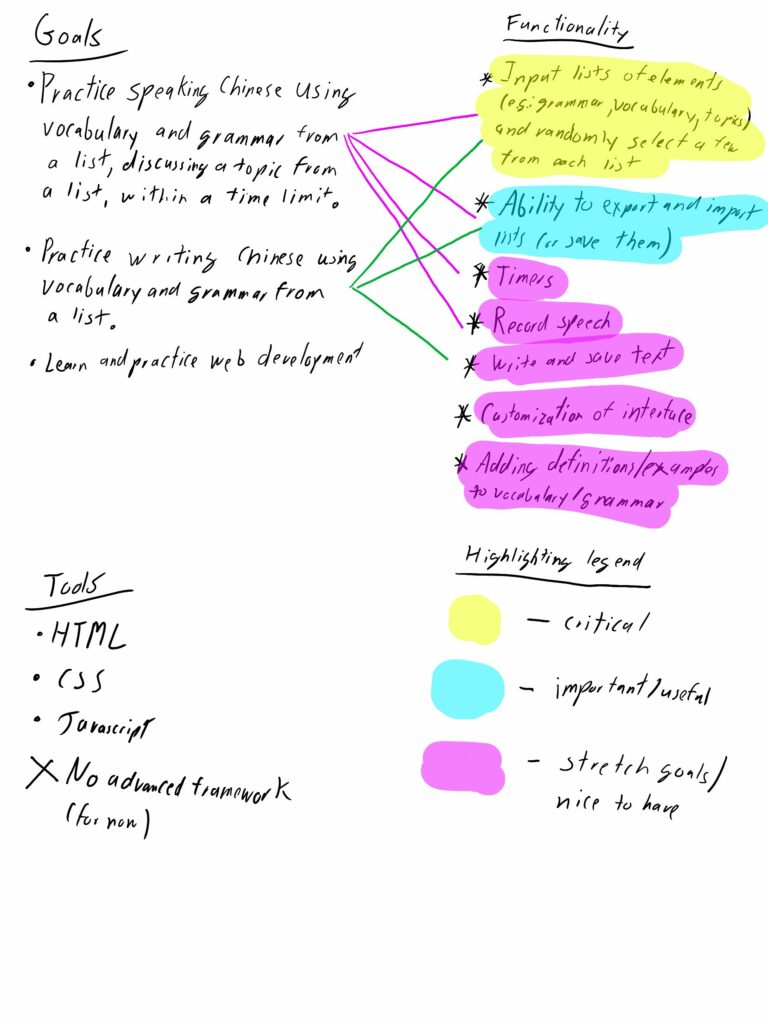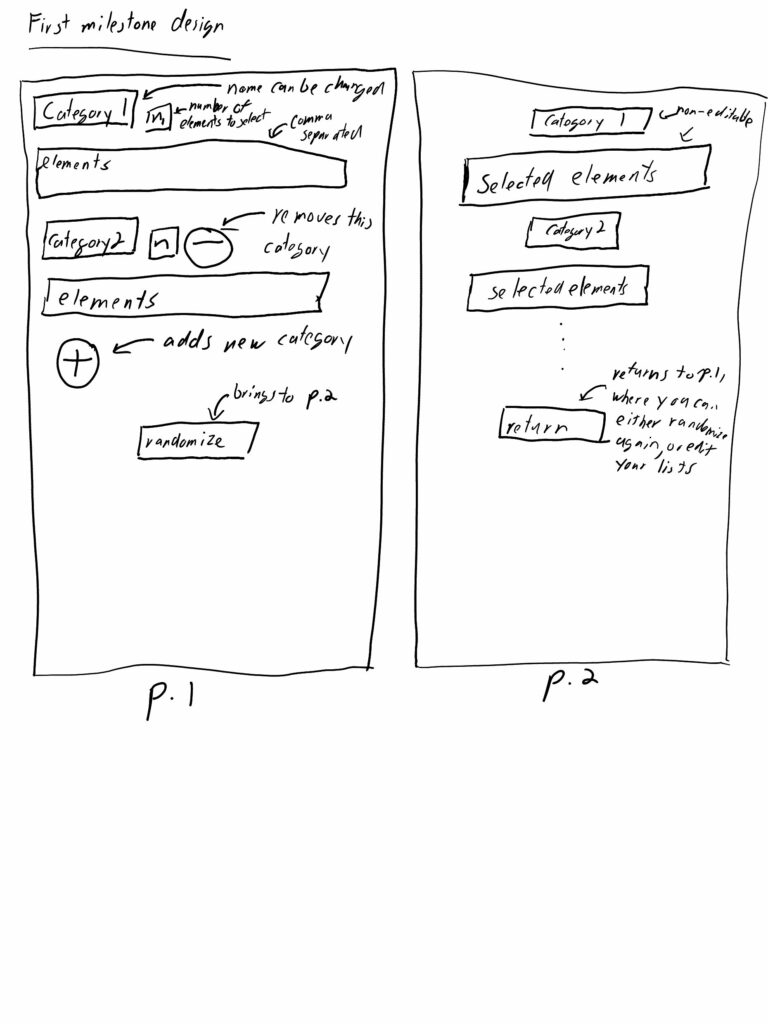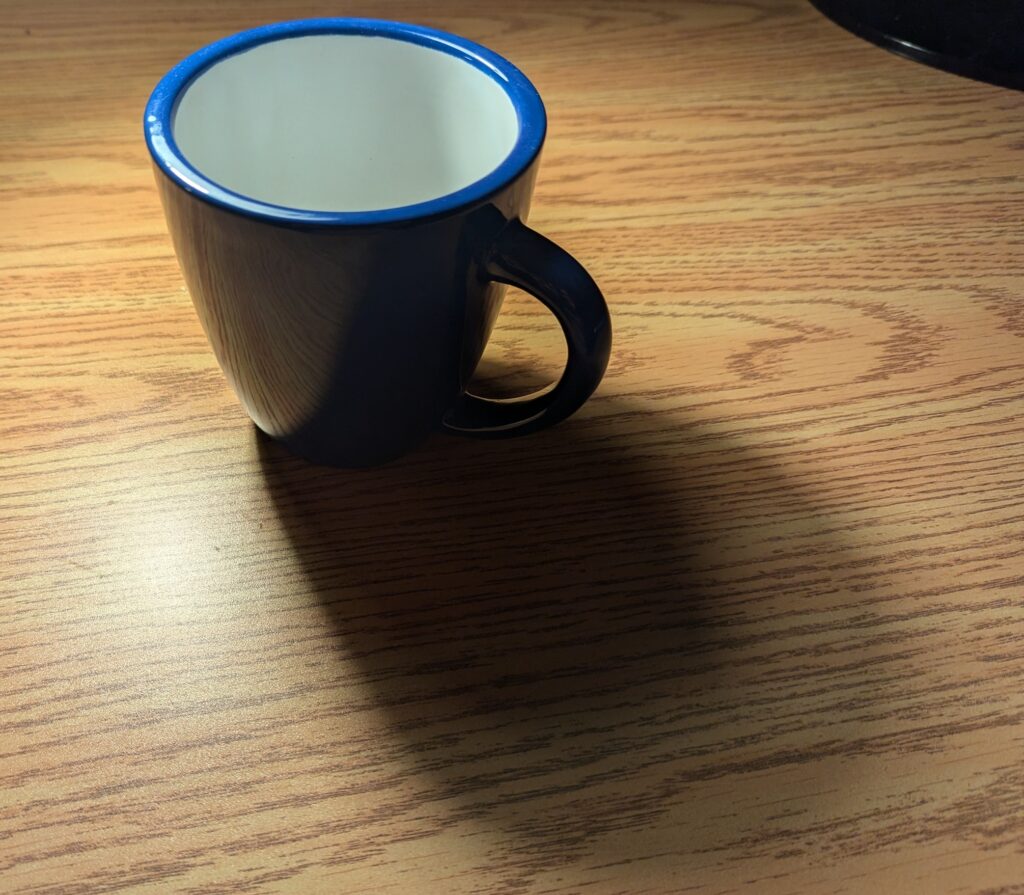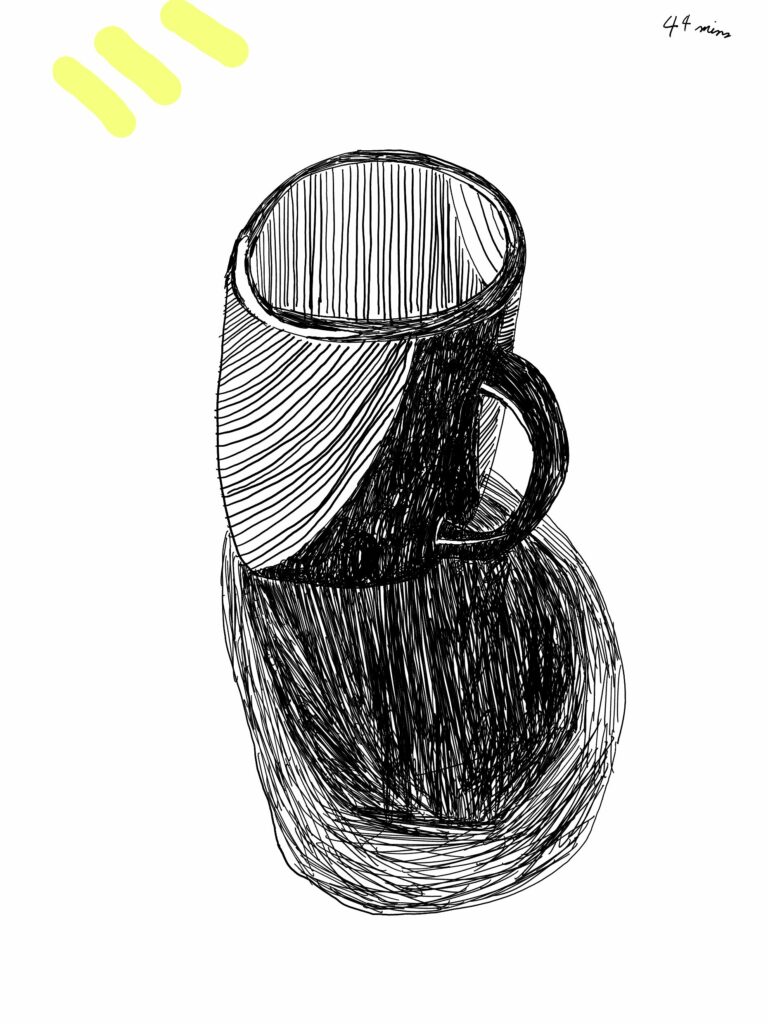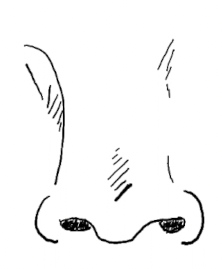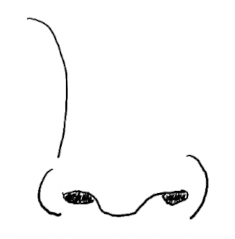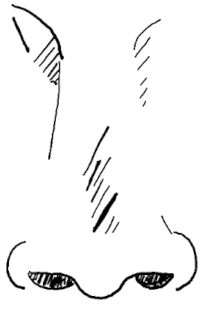Introduction
Hello Everyone,
As you may have noticed, a lot of time has elapsed since my last post, and I am sorry about my disappearance. Unfortunately, life has been a bit hectic and I’ve also been struggling with both motivation and discipline. Therefore, I figured I should take some time to think through what I want and need, and share my thoughts.
Ongoing projects
First and foremost, what about the ongoing projects such as the Drawing Challenge and the Programming Projects? What’s happening with them? They’ve mostly been put on hold.
Drawing Challenge
For the drawing challenge, I actually have an additional day of drawing done, and have started drafting a blog post. However, I’ve been feeling overwhelmed regarding completing the blog post and getting back into the challenge. You can probably tell this is a recurring challenge of mine. For this reason, I think I will actually need to add onto my existing strategy, and limit the word count of my blog posts. In this case, I think I should limit the individual day’s work to 500-1000 words, instead of getting carried away with thousands upon thousands of words. Moreover, I think I should focus more on broad strokes (pun intended), and not go into details about the individual aspects of the process itself. However, I will still need a retrospective phase on the drawing sessions, since I consider this a vital aspect of learning a skill.
I think limiting the word count should be good for both me and my audience. I realize that keeping up with my posts could be just as overwhelming as writing them is for me. Thus, having more bite-sized posts could be beneficial from multiple angles.
But while at the daily grain, I plan to limit the scope of the posts, it might still be good to have larger scope “synthesis” posts, such as when completing milestones (e.g.: a period of time, a frame or collection of frames for a scene, etc). In those, I could go into more detail about the learning process, and retrospect at a larger scale.
Programming Projects
For the Programming Projects, I have already written a Youtube Extension prototype, which I’ve been daily driving, although it still has a few minor issues. However, I’ve still not written anything yet. Why? Because the goal is to introduce programming at a digestible level, while demonstrating that it’s attainable and doable, and that you can tackle such projects on your own. However, this is a daunting task, which I want to do well. For this reason, I’m struggling to even get started. But that’s something I need to get over.
Improving Sleep
This is something I mentioned before in Learning to Draw People Challenge – Second Pause Discussion: I’m struggling with insomnia, and figured I should investigate ways of improving this. However, I’ve still not done anything about it. But it’s becoming increasingly important to resolve my sleeping problems, so I think I will:
- Get a notebook to journal daily progress
- Look at resources for potential techniques
- Use trial and error and report back on my findings
Competing ideologies
Beyond my issues with discipline, I have two competing ideologies that contribute to my paralysis:
- Everything worth doing is worth doing well.
- It’s better to just do something, even if poorly, than not to do anything at all.
Because of these, I often feel unable to make progress on my projects, often feeling like the former should hold true. However, it is my belief that the latter also has a lot of value, since through doing, one gets to improve. Especially when iterating over and over again.
Putting some further thoughts into these, I think it’s a matter of context. They probably exist on a scale, and the purpose of the “project” should decide how “well” it should be done, versus how much you should just “do it and get your reps in”, in order to practice and improve. Some potential considerations:
- Are you trying to learn something (just iterate) or are you trying to use your existing skills to accomplish something (do well).
- Is what you’re doing a final product (do it well) or something that can easily be discarded or reworked (iterate)
- Do you need a quick fix (just do something) or do you need a solid, permanent solution (do it well)
For this reason, I think my “challenges” blog posts (such as the Drawing Challenges) should focus on iteration and just doing it and getting something out, since my goal is to learn something. Moreover, none of the existing drawings are currently meant as a final product. Thus, I think it’s also fine for the blog posts to be made more quickly and with less effort. Meanwhile, since the goal of the programming projects posts is to teach people and show them how they can get started on tackling problems on their own, I think it’s important to do them well.
However, do note that this applies to the blog posts themselves, and not the projects. Paradoxically, the time spent on learning to draw should fall in the first category. If it’s worth learning, it should be worth learning well. Thus, I should not only focus on drawing daily, but also on improving. Meanwhile, the programming project itself doesn’t need to be perfect, since it can be further iterated on, and is meant as a guidance on how a layman can tackle such problems.
The future prioritized
I have a lot of projects and goals I’ve been wanting to work on, and thoughts on how to tackle them. Here’s an incomplete list of things that are either ongoing, or which I’m contemplating:
- Learn how to be more disciplined and productive, and share what I learn
- Learn Chinese
- Learn to Draw
- Programming Projects
- Make Youtube Videos
- Make posts/videos about my experience learning Chinese
- Make cartoons about learning Chinese
- Make a custom version of this blog, instead of using WordPress
- Learning Sleight of Hand
- Learning Animation
- Learning Music
- Learning Pixel Art
- Take two of learning Photography
- Writing
- Drawing a Manga
- Making a Video Game
- Startup ideas
So, now the question is, how should I prioritize them? Well, first and former, one of the most important items on this list, currently, is learning Chinese. And as “what is worth doing is worth doing well”, I should probably prioritize it over other things if I truly want to learn the language and become fluent. For this reason, I should probably both prioritize it, along with items that can reinforce it, such as “learning to be more disciplined” (since that can reinforce most habits), “Making posts/videos about my experience learning Chinese”, and “Making cartoons about learning Chinese” (Along with a mystery programming project I have in mind).
Next, I would really, really like to get into more creative projects, such as writing, drawing manga or making a video game. Turns out, writing can supplement the other two, so I should likely prioritize it over them. Meanwhile, there are also dependencies: learning how to draw is vital to manga, and can be very useful for making video games (and although it would be a different art style, the fundamentals would likely be shared); similarly, Music and Pixel art can be useful when making a video game.
However, some of these could also be driven backwards. For instance, drawing Manga could be a great opportunity for learning and practicing associated skills. The main thing to note, however, is that there exists a hierarchy between some of these elements, and that some projects have more skill requirements, making them more complex. (E.g.: making video games).
Accordingly, I probably should have the following top-level priority for now:
- Learning how to be more disciplined and productive (including fixing sleep)
- Learning Chinese and related projects
- Keeping the blog alive
And below that are other projects with no clear ordering:
- Learning Challenges
- Programming Projects/tutorials
- Youtube Videos
- Creative Projects (Writing, Manga, Video Game, Animation, etc…)
However, I must also acknowledge that there is value to completing existing projects. For this reason, I think I want to prioritize the Drawing Challenge, until I’ve finished the scene as indicated in Learning to Draw People Challenge – Take Three. Moreover, I’ll also want to prioritize writing up a tutorial on the Youtube Extension. But, it’s important to keep specific and attainable end goals for now. If the timeline starts getting in the way, I will have to reevaluate.
Personal Life and Complications
While these are the priorities that seem the most sensical in a vacuum, I must also acknowledge the reality of my personal life, along with my wants amd needs.
For example, I have reached a point in my life where I would love to have a love-partner. If that is to be the case, I probably need to invest time into dating and the likes, which will be time I cannot dedicate to my projects, but also which might modify their course and priorities (I’m not 100% sure how, but I will not reject the possibility).
Beyond that, I should also focus on my health. This includes doing more exercise (which I’ve already started with swimming, although that’s been on hold), but I might try to supplement with gym sessions. Moreover, I should probably look into my diet and try to eat healthier. All of which require both time and energy, and not only in and off themselves, but also in the form of research.
Then, there is the matter of money. At this point, I think it’s time for a new source of income, which might come in the form of a part-time or full-time job. This on top of my studies will definitely cut down on my free time. Notwithstanding how draining these can be. However, another alternative could be to find a way to make enough money from this blog (or some associated projects) to survive, which could mean changing my priorities to accommodate such a possibility.
Finally, I must also look for a new place to move to in mid-July, which will also require a lot of focus, energy and time. Yet it must be done all-the-same.
Conclusion
I care a lot about this blog and think I should definitely do something about it. I care about learning different things, and sharing my thoughts and experiences doing so. And if it’s something I truly care about, I should find a way to prioritize it. For this reason, I figured I should think through what I want for this blog, and how to make it happen. And part of this is to prioritize the different things I want on it, and to find way to make them happen with (or despite) my ongoing life. Based on this, here is my plan for the short term:
- Find ways to be more productive and disciplined, including making constant progress on this blog.
- Complete the scene for the new concept for the Drawing Challenge
- Write the posts for the Youtube Extension
I think I will also want to alternate progress between the latter two projects at a weekly rate. One week writing the tutorials, one week drawing. (Although this might be altered on a case-by-case basis if I suddenly have a lot of motivation and inspiration for one of the projects).
Moreover, I should keep in mind the dichotomy between progress and quality, and adapt it to each project in a way that aligns with the projects’ desired goal. For this reason, I plan to limit the scope of individual drawing posts, and only increase a post’s scope when related to milestones, or I have the motivation and want to cover something I consider important.
Meanwhile, since I believe the programming tutorial posts deserve to be done well, I will put more effort towards quality, including asking for the opinion of some of my friends before posting them.
Beyond this, it remains to be seen. I expect once either of those projects reaches its defined end, or my life situation is altered sufficiently to heavily impact such projects, I’ll have to re-evaluate my situation and follow up.
Thank you all for you patience and understanding. Do let me know if you have any thoughts, ideas or just suggestions for any of this. Or even just words of encouragement. Anything would be appreciated. Have a nice one, and take care!
